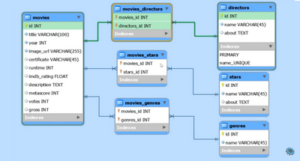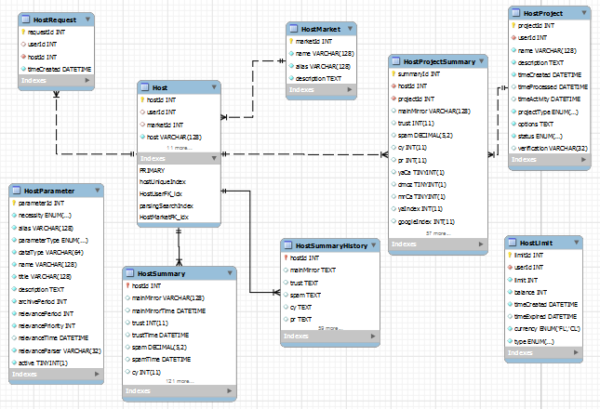
This is because a schema is already created with each database user. In Oracle Database, the CREATE SCHEMA statement doesn’t actually create a schema. In other words, you can use CREATE SCHEMA or CREATE DATABASE to do the same thing. This is because CREATE SCHEMA is a synonym for CREATE DATABASE. In MySQL, CREATE SCHEMA creates a database. Creating Schemasĭespite their differences in defining schemas, each of the three aforementioned DBMSs support the CREATE SCHEMA statement.Īnd that’s where the similarity ends. This article on schema definitions by DBMS provides more detail. Oracle Help Center. Retrieved 6 June 2016. Oracle Database Online Documentation 12c Release 1 (12.1). A schema is owned by a database user and has the same name as that user. Oracle’s schema is very much tied to the database user.Ī schema is a collection of logical structures of data, or schema objects. Oracle Database‘s schema system is quite different to the other systems. Microsoft Developer Network. Retrieved 6 June 2016.

The names of tables, fields, data types, and primary and foreign keys of a database. You can substitute the keyword SCHEMA instead of DATABASE in MySQL SQL syntax, for example using CREATE SCHEMA instead of CREATE DATABASE. In MySQL, physically, a schema is synonymous with a database. Here’s a quick definition of schema from the three leading database systems: MySQLĬonceptually, a schema is a set of interrelated database objects, such as tables, table columns, data types of the columns, indexes, foreign keys, and so on. Each of these has its own specific meaning.
Database workbench define software#
In software development, when discussing schemas, one could be discussing conceptual schemas, physical schemas, internal schemas, external schemas, logical schemas, etc . We need to create a conceptual schema before we even start with the physical schema within the DBMS. Schema is used in psychology to describe an organised pattern of thought or behaviour that organises categories of information and the relationships among them.īefore designing a database, we also need to look at the categories of information and the relationships among them. The word schema originates from the Greek word skhēma, which means form, figure, shape, or plan. It has different connotations within different contexts. If you were confused before, hope I haven’t just made it worse… Broad MeaningĪnother reason for the confusion is probably due to the fact that the term schema has such a broad meaning. The ISO/IEC 9075-1 SQL standard defines a schema as a persistent, named collection of descriptors. So, depending on the RDBMS you use, schemas and databases may or may not be the same thing. And according to this SQL Server technical article, a schema is a separate entity inside the database.Therefore, a schema and a database are two different things. However, the Oracle Database documentation states that certain objects can be stored inside a database but not inside a schema.Therefore, a schema and a database are the same thing. The MySQL documentation states that physically, a schema is synonymous with a database.Part of the reason for the confusion is that database systems tend to approach schemas in their own way. The question often arises whether there’s a difference between schemas and databases and if so, what is the difference. There’s a lot of confusion about schemas when it comes to databases. Is a Schema and a Database the Same Thing? You can even reverse engineer a database into a diagram. You can then use the script to create a database. In fact, MySQL Workbench allows you to generate a CREATE TABLE script straight from the diagram. So by looking at these schema diagrams, we could go ahead and create a database. Views: Special view on data used for appraisals.

Database workbench define movie#
In this case the products are movies, so it contains data such as movie title, its category, the actors, etc.

In this case, the schema diagram has been separated into four sections: Here is a more complex example of a database schema: A database schema diagram of the Sakila Sample Database. It shows three tables, along with their data types, relationships between the tables, as well as their primary keys and foreign keys. A basic schema diagram representing a small three-table database.Ībove is a simple example of a schema diagram. Both schemas and schemata can be used as plural forms.Ī schema contains schema objects, which could be tables, columns, data types, views, stored procedures, relationships, primary keys, foreign keys, etc.Ī database schema can be represented in a visual diagram, which shows the database objects and their relationship with each other. In database terms, a schema (pronounced “skee-muh” or “skee-mah”) is the organisation and structure of a database.


 0 kommentar(er)
0 kommentar(er)
